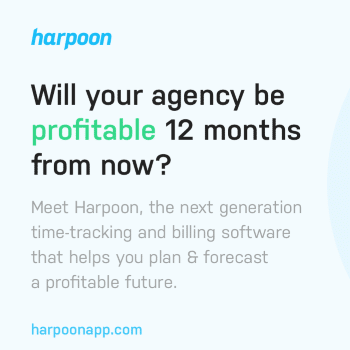There’s something energizing about getting lost in a project you love. Whatever the medium, working on it feels effortless. It completely absorbs you. You’re doing it because it lights you up, not because you’re thinking about clients or income.
But what happens when that passion starts drawing attention?
Suddenly, people begin asking for your help or admiring your work. You start getting feedback, requests, or encouragement from people who recognize your talent, even if you haven’t put yourself out there in a formal way.
That’s usually the first sign that your personal project may have the potential to become something more.
That’s exactly how things unfolded for me. I started writing by helping friends with Airbnb listings, resumes, and business plans as informal, one-off favors, but over time, more people reached out. What began as helping slowly turned into something more structured, and eventually, I realized I could offer writing and editing as a service. It was a gradual process, shaped by consistent interest and small experiments, rather than one giant leap.
If you’re wondering if there’s a business hidden inside the thing you already love doing, this is for you. I’ve walked that path with writing, and while every journey looks different, there are patterns, signs, and strategies that can help you figure out your next move.
Passion Is a Great Start, But It’s Not a Plan
Loving your craft is essential. It gives you the fuel to keep going when things get messy. But passion alone isn’t enough to build a sustainable service. If you want people to pay for what you offer, you’ll need to shape it into something they can understand, trust, and buy.
Many people hold back until they feel “ready”. Waiting for a course, a credential, or a portfolio that looks just right may feel like the way to go, but starting a business even when you’re not an “expert” is more common than you’d think.
Real expertise grows through repetition, real feedback, and applied work. So, if you already have something that others appreciate and ask for, there’s a good chance you have the beginnings of a service. You just need to give it structure.
Three Signs It Might Be Time to Start Charging
There’s no perfect moment to turn your passion into a business, but these signs are strong indicators you might be ready:
1. People keep asking for your help
Whether it’s casual requests or recurring referrals, consistent interest in your work signals demand. Don’t dismiss this just because it’s coming from friends or acquaintances. Word-of-mouth is how many businesses begin, and it’s a very effective form of marketing too.
2. The work excites you
If your passion project still feels exciting even when life gets busy or stressful, that’s more than a hobby. It’s a clue that this work could be part of something bigger.

Mark Twain said “ Find a job you enjoy doing, and you will never have to work a day in your life.” To me, this is exactly what he means. If what you’re doing energizes you, it’s a strong sign you’re on the right path, and that it has the potential to grow into something meaningful, sustainable, and fulfilling.
3. You’re already delivering results.
Maybe someone used your designs to launch their brand, or your writing helped them get noticed. If others are benefiting from your input, that’s proof of value.
Even if doubts creep in (and they will), these are real signals that people find your work helpful, and that’s worth paying attention to.
Pitfalls to Avoid Early On
As you start turning your passion into something more structured, there are a few traps it helps to avoid:
- Undervaluing your time. It’s easy to set prices based on what feels comfortable, rather than what your work is worth. Respect your time, even if your rates start small.
- Waiting for a perfect brand or website. You don’t need a full visual identity to begin. A single page with your offer and a way to contact you is enough to start.
- Offering everything to everyone. Try not to dilute your energy by saying yes to every request. Clarity comes faster when you work with the kinds of clients or projects that feel most aligned.
Being aware of these common stumbles won’t make you immune to them, but it will help you recover faster and build with more intention.
Transitioning From Free to Fee
Shifting from “happy to help” to “this is my paid-for service” can be uncomfortable. It’s one thing helping out a friend, but sending them an invoice feels like something completely different. You might also worry that charging will take the joy out of the work, or that strangers won’t take you seriously.
Here’s how to ease into that transition:
- Start with a beta offer. Choose a small group of people you trust and test out a paid version of your service. Make it clear you’re still refining things, and ask for honest feedback.
- Make your process visible. Show your work in progress, and talk about what you’re building. Let people see that this isn’t a side gig and that you’re treating it seriously, even if it’s still evolving.
- Look for patterns. Which parts of your work do people value most? What do they come back for? This is where your offer begins to take shape.
This stage of growth is about showing up with intention, learning in public, and slowly gaining the confidence to say, “Yes, this is what I do.”
What to Have in Place Before You Offer Paid Services
You don’t need a perfect website or a polished brand before you start charging, but a few key elements will help you feel grounded and make it easier for people to say yes:
- Proof of value. Even informal testimonials from people you’ve helped can build trust.
- A visible online presence. Whether it’s a LinkedIn profile, a Google Doc portfolio, or a simple landing page, give people something to refer to.
- A starter price. Pick a rate that respects your time and makes sense for your experience level. You can adjust it later.
- A clear way to reach you. Make sure it’s easy for people to take the next step, whether that’s sending a message, booking a call, or filling out a form.
This is your soft launch. You’re showing that you’re open for business without needing to shout it from the rooftops.
Build Systems That Will Make Your Work Sustainable
As your client list grows, so will the complexity of your business. That’s why simple systems can save you a huge amount of time and stress.
Start with the basics such as templates for onboarding, feedback, or proposals, a rate card that you can update and send easily, and boilerplate responses for repeat questions

These can be as simple as a welcome email that links to a short intake form, a shared document outlining timelines, and a simple feedback survey once the work wraps. It just needs to be clear and repeatable.
You can also use AI tools to work faster and more creatively. AI can speed up content ideation and creation, organize your ideas, and handle admin tasks you’d otherwise dread. It won’t replace your creativity, but it can clear space for it.
These systems are about preventing burnout as much as efficiency. They free up your focus for the creative work itself, instead of getting buried in back-and-forth logistics or repetitive admin, and that’s essential if you want to grow without feeling overwhelmed. Managing stress as a freelance creative is easier when you don’t have to make every decision from scratch.
Define Your Focus (Even if You’re Still Figuring It Out)
Once you’ve done a few projects, you’ll start to notice patterns. Particular types of clients energize you. Certain types of work come more naturally. That’s the beginning of finding your niche.
You need direction without locking yourself into a label, so ask yourself these three questions:
- What kinds of requests do I love getting?
- What work feels easy but delivers big impact?
- Who seems to get the most out of what I offer?
And if you’re not sure, this is a good time to invest in your growth. That might mean taking a class, joining a community, or finding a mentor. If your passion is creating audio for podcasts, ads, or social content, there are specialist music production courses that help turn creativity into a career. The same goes for design, video editing, or photography. Whether it’s a course, a community, or a structured learning environment, these kinds of investments can be the bridge between what I love and what I do.
You Don’t Have to Have It All Figured Out
Waiting for clarity leads to… more waiting.
Most successful creative entrepreneurs start with a few early wins, some encouragement, and a willingness to figure it out as they go. A detailed business plan can come later. You can start quietly and intentionally with one offer, one price, and one client.
There’s no need to quit your job, post a big announcement, or rebrand your entire life overnight.The important thing is to stay open and let your passion guide you toward something more structured.
Your experiments will teach you what works, and the results will shape and bolster your confidence over time.
Sometimes, the thing you love doing is a signal, and with the right plan, that signal can turn into a service people will gladly pay for.

Keep the conversation going...
Over 10,000 of us are having daily conversations over in our free Facebook group and we'd love to see you there. Join us!



